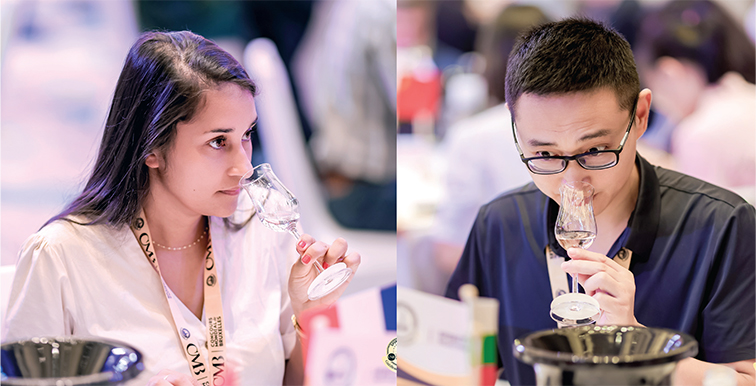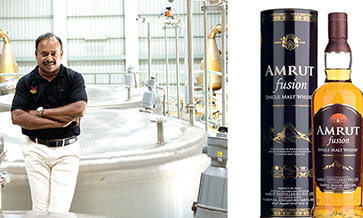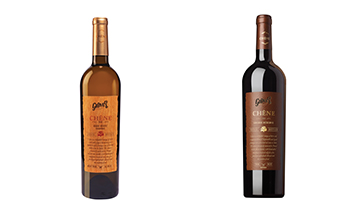India’s alcohol beverage market is experiencing rapid growth, and several Indian brands have won accolades on the global stage. Awards from international competitions help increase visibility of a brand and receive valuable feedback from jurors. Vikram Achanta, who was part of the jury in this year’s Spirits Selection awards in Renhuai (China), provides some insights
At my judging table, a diverse group of jurors gathered, including Carole Quinton, Master Distiller for Cointreau; and Pedro Dias, a brand owner from Portugal; alongside Carlos Borboa, our Jury Chair. This was my first time judging Spirits Selection, while Carlos and Pedro brought years of experience.
While waiting for the competition to begin, I spoke with Pedro about the rationale for brands entering competitions. He emphasised, “Producers often have nuanced views on the results. A product that’s the #1 selling rum in Portugal may not win a medal here.” This highlighted a crucial aspect of the industry: the varying perceptions of quality and success based on regional preferences and market dynamics.
As we settled into the judging environment, I felt a mix of excitement and nervousness. The venue, Renhuai Hot Springs Hotel, was a striking backdrop for this prestigious event. Known for its production of sauce aroma Baijiu, the People’s government of Renhuai hosted us with impressive hospitality, including an army of over 3,000 volunteers dedicated to ensuring everything ran smoothly.
Entering the main judging room, I noticed how it was ceremonially decorated with flags representing the 38 countries of the jurors. It truly felt like the United Nations of Spirits competition! With around 150 international jurors and an additional 100 from China, we were tasked with evaluating a staggering 2,758 samples in 58 categories, with over 800 Baijiu samples alone.
Evaluation process
Each table, consisting of six jurors and an interpreter, was led by a chairperson who was typically a veteran of several competitions. His/her role was critical in forging consensus about the medals to be awarded by each table. This structure not only facilitated organised judging but also ensured that diverse opinions were considered.
Armed with mini tablets, we used a simple application to select the flights we were judging and to register our scores and comments. We had the option to score in four languages: English, French, German or Italian, which further underscored the international nature of the event.
The judging began with a calibration sample, which we tasted blind. This sample was intended to help us calibrate our scoring and get our senses into gear. The calibration sample is often an award-winning product from previous years, and it helps us gauge how closely our scores align with established benchmarks.
Personally, I found this process challenging; I tended to err on the side of caution while scoring, realising as the judging continued that I needed to be more generous with samples that stood out.
I felt a weight of responsibility to do justice to the wide array of samples we would taste over the next few days. While I didn’t consider myself particularly eloquent in describing spirits, my 24 years in the industry had honed my ability to distinguish good from bad, and to recognise exceptional spirits that could captivate the senses.
14 parameters
With this confidence, I began my task. We judged flights of 5-7 samples each from the same spirits category. Our role was to evaluate each sample on colour, aroma, palate and overall impression, adding detailed remarks.
We scored each sample across 14 distinct parameters. At the end of each judging session, the chairperson summarised the scores and facilitated a discussion to determine if any samples deserved Silver, Gold or Grand Gold medals.
According to European Union law, no more than 30% of the samples can receive a medal, and we maintained ongoing tracking to adhere to this limit.
The broad criteria for medals were clear: samples scoring 87 points and above qualified for Silver, 90 for Gold, and 93 or higher for Grand Gold, with typically only 1% of samples in the running for Grand Gold. This rigorous process ensured that only the finest spirits were recognised.
Our comments were analysed separately, with Winespace, a French firm, using artificial intelligence to collate the feedback for producers. This innovative approach aimed to provide meaningful insights to brands, allowing them to refine their offerings based on the jurors’ evaluations.

Each sample was judged on 14 distinct parameters. Samples scoring above 87 points qualified for Silver, 90 points for Gold, and 93 or higher for Grand Gold.
Scoring and results
The experience of tasting such a wide variety of spirits and liqueurs over the course of three days was truly remarkable. Our small jury tasted around 150 samples across categories ranging from 100% blanco Tequila to Grappa, Baijiu (both strong aroma and sauce aroma), Coquy blanco (an agave native to Venezuela), and World Whisky (single malt).
As I sampled the international single malts, I wondered if there were any from India among them. With a record number of Indian samples entered – thanks in part to award-winning drinks writer and educator, Rojita Tiwari’s efforts, in representing India for Concours Mondial de Bruxelles (CMB) Spirits Selection – I was hopeful.
I particularly enjoyed tasting the 100% agricole rums (unaged), the Mezcals and the 100% blanco Tequilas. Each tasting was an opportunity to explore new flavour profiles and understand how an international palate encounters spirits that might be unfamiliar to them.
For instance, I contemplated how jurors without prior exposure would react to a flight of cashew Feni or Mahua. In these instances, it helps to anchor the tasting with familiar spirits. For example, Dukshiri Feni, a coconut Feni expression, can resemble a Mezcal with its earthy taste, and Mahua has characteristics similar to Grappa.
Medals tally
The highest-scoring product in this year’s competition was Martinique’s Rhum Agricole Extra Vieux HSE Château La Tour Blanche 2016 by Valois & Cie. Scotland achieved a remarkable 21 medals, while the title of World Whisky revelation went to Taiwan’s Omar single malt whiskey cask strength (Sherry cask).
Japan garnered 14 medals, and it was surprising to learn that Bolivian producers received eight medals, including a Grand Gold. Singani, a Bolivian brandy distilled from the eau de vie of white Muscat of Alexandria grapes, is considered Bolivia’s national spirit and produced in the high valleys of the country.
Reflecting on these results, I couldn’t help but think about India’s potential. It’s time for us to leverage well-recognised global platforms, such as Spirits Selection and the International Wine and Spirits Challenge, to showcase Indian spirits on the world stage.
Not just our native spirits like Mahua and Feni, but also in categories like rum and single malt, where Indian producers are increasingly incorporating local elements – such as making rum from jaggery or using Ayurvedic ingredients to season barrels for whiskey.
On-trade speak
Do the rankings and medals influence purchase decisions of the on-trade? Sahil Essani of Bengaluru’s Muro Bar says that for them brand recall normally triumphs all, as that’s a great reflection of trends and consumer thinking. However, in the case of “uncharted territories” – for example onboarding a new wine label – these ratings can be critical.
Sahil says he has seen relatively newer brands, like some Indian single malts, sell better after their awards start coming in. If brands have low recall initially, they can be smart about how they leverage the awards received to be “defined by quality”, and potentially make market share gains from the same.
Atul Tiwari of New Delhi’s Leela Palace says, “Recognition on a global platform definitely helps assure us of a product’s superior craftsmanship and quality… Awards can also help elevate the perception of Indian alcobev brands and make them competitive with global offerings.”
Consumers also respond more positively to “medal-winning” products, and there is a noticeable impact on sales, Atul says, compared to non-competing brands. It will be music to the ears of many when Atul says he incorporates award-winning brands into “special pairings or exclusive promotions”.
The presence of platforms such as Spirits Selection actively promotes greater visibility for award-winning brands through various initiatives. For example, at the upcoming Wine Paris and Vin Expo event in February 2025, CMB invites award-winning brands (from 2023 and 2024) to participate under its banner.
Other initiatives include partnerships with United Airlines for their business class lounge in Mexico City and the opening of wine bars globally.
Bonhomie & fun
As the evenings unfolded, the jurors took the opportunity to share bottles of their native spirits, creating a convivial atmosphere rich with learning and camaraderie. Conversations flowed freely, with Carlotta from Mexico discussing her efforts to make Pulque, a traditional fermented alcoholic beverage made from the sap of agave.
With Carole we explored how Cointreau can remain relevant in an aperitivo market increasingly driven by spritz cocktails. Vicente from Brazil brought Cachaca for us to taste, leading to discussions about my previous visit to Rio and adventures in the Santa Teresa neighbourhood.
He laughed, saying, “You got lucky. It’s not the safest at night!” I was grateful for my experience.
I also enjoyed tasting two gins from a small distillery in Kobe (Japan), each named for the mountains and the sea, with botanicals from each region featured prominently. Ana, a rum producer from Guadeloupe, shared insights about artist residencies organized at her distillery, fostering creativity in spirit production. It was truly a heady ferment of ideas, and I found myself eager to return next year, if invited.













